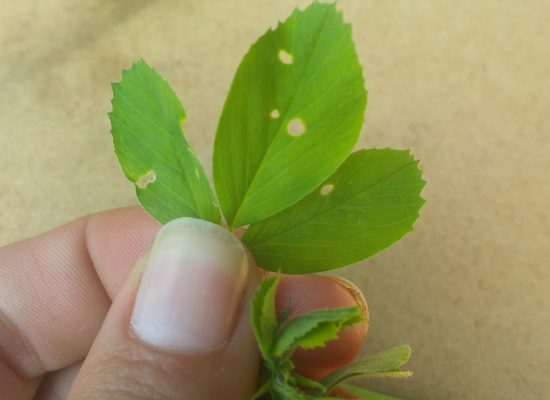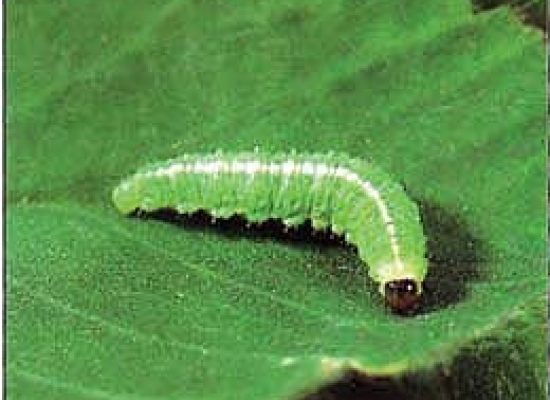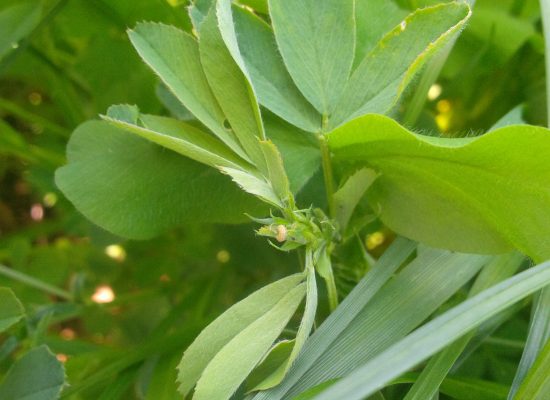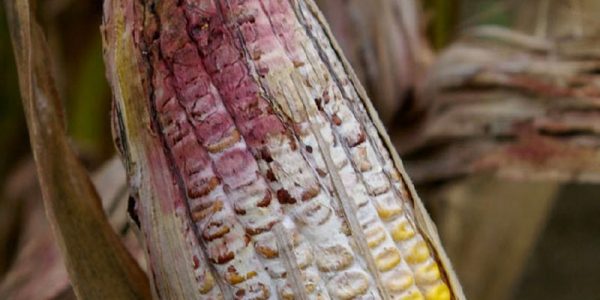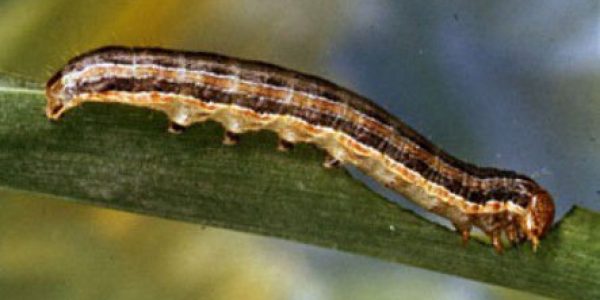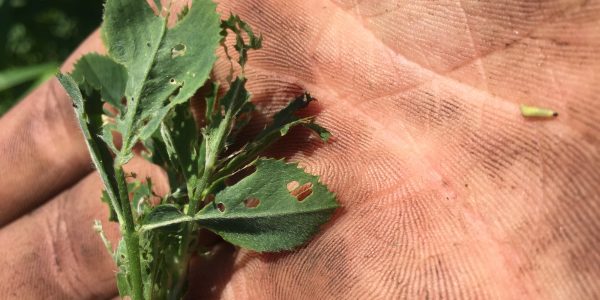For those who have hay which consists of more than 50% alfalfa, it is time to start considering scouting for alfalfa weevil.
Alfalfa weevil can do substantial damage to alfalfa. Threshold levels of alfalfa weevil can feed on all of the tissue in-between the veins of alfalfa leaves. Loss of leaf matter results in lower-protein, lower digestibility, and lower overall yield.
But don’t dismay! Proper scouting can ensure your hay field will thrive even if you find these pesky pests.
Currently, we have been noticing pin-hole damage (figure 1) on areas of hay fields with denser stands of alfalfa. Alfalfa weevil larvae can be identified from the following features (Figure 2):
- Pale green to bright green body
- Black head
- White strip down the middle of back.
1st instar (baby) larvae can be difficult to find if you don’t know where to look. When scouting for alfalfa weevil larvae, target the leaves that haven’t quite opened yet (Figure 3). They can usually be found on the backside of these leaves or curled inside the folded leaves of soybean.
Will all this information, you may be asking, "When is a problem bad enough to consider spraying?"
These rules of thumb can help you decide:
- 40% leaf tip feeding (% of leaf tips with feeding, not 40% of the leaf gone)
- 2-3 active weevil per stem
- More than 7-10 days until harvest
If all of the above apply to you, then you might want to consider spraying. There are a few products available and we can help you decide which one is most suitable for your operation.
If you’re not sure about whether you have a problem, feel free to contact Daryl Haanstra (905-973-0036), Jordan Eyamie (905-966-9608), or the Twenty View office (905-957-4979). We can help evaluate your fields and help you decide what products you can use to control weevil.
Author: Jordan Eyamie
Related Articles
Armyworm
Are you checking your fields for armyworm?
Here's the information you need on identification, favourable environments, and control methods.

